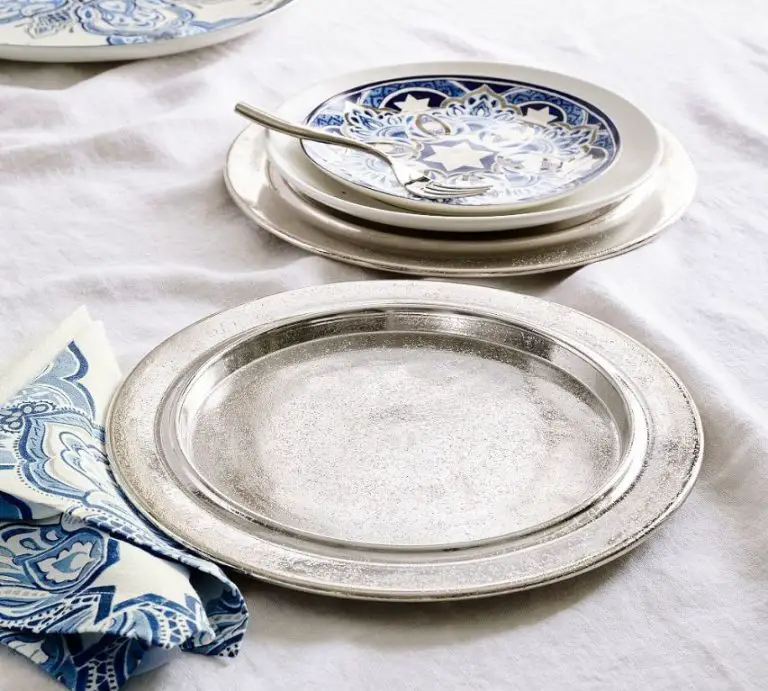What Are The Two Types Of Crimp Connectors?
Crimp connectors are a type of solderless electrical connector used for joining two or more stranded or solid wires together (Crimp Connectors). They provide a solid mechanical connection and electrical contact between the wires through deforming and cold welding the connector material around the conductors. Crimp connectors are commonly used in the automotive, construction, and manufacturing industries for power transmission and signal wiring.
The key benefit of crimp connectors over soldered connections is that they are quick and easy to install, often without the need for special tools or heat. They also form reliable, vibration-resistant connections. Overall, crimp connectors offer an efficient and durable method for joining wires in a wide variety of applications.
Insulated vs Non-Insulated Crimp Connectors
Crimp connectors come in two main types – insulated and non-insulated. The key difference between insulated and non-insulated crimp connectors is that insulated connectors have an insulating material like plastic or vinyl covering the metal conductor inside, while non-insulated connectors are made entirely from metal with no insulation [1].
Insulated connectors help prevent shorts, corrosion, and dangerous current leakage. The insulation electrically isolates the connector and protects against accidental contact. Insulated connectors are required for automotive and appliance wiring where short circuits could occur [2].
Non-insulated connectors are commonly used for ground wires, internal chassis wiring, cage clamps, and bus bars where insulation is not needed. They provide a solid metal-to-metal connection but lack protection against shorts. Care must be taken to ensure bare non-insulated connectors cannot contact other wires or conductive surfaces.
In summary, choosing insulated vs non-insulated really depends on the specific application and whether insulation is required to prevent shorts and energized contact. Insulated connectors provide safety and isolation while non-insulated are best for grounding applications.
Closed-End vs Open-End Crimp Connectors
The main difference between closed-end and open-end crimp connectors is the design of the “barrel” or end that the wire goes into. Closed-end crimp connectors have a closed barrel with a seam where the two sides are pressed together to hold the wire. Open-end crimp connectors have an open barrel that is crimped around the full circumference of the wire.
Closed-end crimp connectors are also referred to as closed barrel, seamless, or non-insulated terminals. The seam in the barrel allows the connector to be crimped tightly around the wire for a secure connection. However, the seam also creates a potential weak point in the connector. Closed-end connectors are best for applications where a water-tight seal is needed, such as automotive or marine uses.
Open-end crimp connectors are also called open barrel or insulated terminals. They completely encircle the wire for maximum contact. Because there is no seam, open-end connectors provide a stronger and more reliable connection. The fully enclosed barrel also protects against corrosion. Open-end connectors are commonly used for electrical wiring in homes, buildings, and appliances where moisture resistance is not required.
In summary, the main factors when choosing between closed-end and open-end crimp connectors are the need for water sealing versus maximum strength and electrical conductivity. crimp connectors ensure a solid mechanical and electrical bond between the wire and connector.(1) The type of application and environment will determine which terminal is most appropriate.
Common Crimp Connector Materials
Crimp connectors are made from various types of metals and plastics depending on the specific application and requirements. Some of the most common materials used are:
Copper – One of the most popular metals used for electrical connectors. Copper is highly conductive, corrosion resistant, and ductile enough to crimp without cracking. Many standard electrical crimp connectors are made from copper.[1]
Aluminum – Lightweight and cost-effective alternative to copper. Aluminum has around 60% of the conductivity of copper. It is more prone to oxidization and must be properly protected. Aluminum is sometimes used for power transmission applications.[2]
Tin-plated copper – Copper connectors with a tin coating for improved corrosion resistance while maintaining good conductivity. The tin plating prevents copper oxidization.
Nickel-plated copper – Similar to tin-plated, nickel coating provides corrosion protection for copper connectors. Nickel does not conduct electricity as well as tin.
Brass – Copper-zinc alloy with good corrosion resistance. Brass has lower conductivity than pure copper. It is a common choice for less critical applications.
Steel – Used when high strength is needed. Steel has poor conductivity and is prone to rusting so it is rarely used for electrical connections.
Plastics – Various plastic polymers like PVC, nylon, etc. are used for the insulation on insulated connectors. Plastics provide electrical insulation and protection for the metal contacts.
Crimp Connector Sizes
Crimp connectors come in a range of sizes to accommodate different wire gauges. The wire gauge refers to the diameter of the wire. Some common wire gauge sizes used with crimp connectors include:
- 12 AWG
- 14 AWG
- 16 AWG
- 18 AWG
- 20 AWG
- 22 AWG
12 AWG is a large wire gauge used for high current applications, while 22 AWG is a very small gauge used for signals or other low power uses. The lower the AWG number, the larger the wire diameter. Crimp connectors are color coded or labeled with the appropriate wire gauge size they accept.
It’s important to match the crimp connector to the correct wire size for a secure connection. Using an undersized connector can result in a loose fit, while an oversized connector won’t fully crimp down on the wire strands. Refer to a wire gauge chart to select the proper crimp connector size for the wire being used.
Some common crimp connector sizes are 14-16 AWG for general automotive wiring, 18-22 AWG for alarm installs, and 10-12 AWG for high current auto audio applications like amplifiers. Choose a connector rated for at least the maximum expected current to allow a safety margin.
Crimping Tools
Crimp connectors require special crimping tools in order to properly join the wire and connector. There are two main types of crimping tools – hand tools and hydraulic tools. Hand tools, like pliers, are manually operated and are best for light duty jobs. Hydraulic crimping tools use fluid pressure to generate tons of force and are designed for heavy duty electrical connections.
Both types of tools have jaws specifically shaped to match the type of connector they crimp. The jaws on hydraulic crimpers can be changed out to accommodate different connector types. Proper crimping requires using the correctly sized jaws for the connector. If the wrong jaws are used, the crimp will be substandard and could result in connection failure.
Crimping tools vary in size from small 5-6 inch pliers to massive 20 ton hydraulic presses. When selecting a crimp tool, you need one large enough to fully compress the barrel of the connector. Undersized tools can’t fully crimp the connector, leading to poor electrical contact. It’s also important to choose high quality tools, as cheap options may not apply even pressure resulting in uneven crimps.
Proper Crimping Technique
Proper crimping technique is essential for creating a solid, lasting electrical connection. Here are the key steps for ensuring a proper crimp:
1. Strip the wire insulation back 1/4 to 1/2 inch exposing the bare wire. Make sure no stray strands are poking out.[1]
2. Insert the stripped wire all the way into the terminal end or ferrule until it bottoms out. The bare wire should be fully inserted with no insulation crimped.
3. Position the crimping tool perpendicular to the terminal and as close to the ring or seam as possible. This ensures the force is directed properly for a tight crimp.
4. Squeeze the handles together in one smooth motion. Do not release pressure until the crimp is complete. Avoid re-crimping as this can weaken the connection.
5. Give the wire a firm tug to ensure it is securely attached. The wire should not pull out of the terminal end.
6. Repeat steps for the other wire(s) so all are crimped securely. For splices, stagger the wires so the ends are not bunched at the seam.
Following proper technique every time ensures the crimped connection will be strong and reliable. Taking shortcuts risks a loose connection that can fail over time.
Applications of Crimp Connectors
Crimp connectors are widely used across many industries and applications including:
Electrical: Crimp connectors are commonly used to connect wires and cables in electrical wiring projects. They provide a secure mechanical connection and electrical conductivity for splicing wires and terminating wires to devices or terminals 1.
Automotive: In automobiles, crimp connectors are used to connect wires for lighting, ignition, sensors, and other electrical systems. They withstand vibration and provide reliable connectivity 2.
HVAC and Refrigeration: Crimp connectors join wires for heating, ventilation, air conditioning, and refrigeration system controls. They resist corrosion and temperature extremes.
Telecommunications: Crimp connectors terminate cables and wires for telephone, networking, and fiber optic systems. They enable modular connections.
Plumbing: Compression crimp fittings create leak-proof seals for connecting pipes and tubing in plumbing systems.
Solar Power: Crimp connectors splice cables and provide reliable connections between solar panels, controllers, inverters, and other system components.
Advantages of Crimp Connectors
Crimp connectors offer several advantages over other connection methods like soldering:
Speed – Crimping is generally much faster than soldering. With the right crimping tool, connectors can be crimped in just a few seconds. This allows for quicker installation and repairs.1
Reusability – Crimp connectors can be removed and re-crimped multiple times, unlike soldered connections which are permanent. This makes crimping ideal for prototyping and situations where connections may need to be changed.2
Durability – Properly crimped connections are highly durable and vibration resistant. They maintain a consistent connection even when wires are moved or vibrated.2 This makes them well-suited for automotive and industrial applications.
Conclusion
Crimp connectors are easy-to-use wire joining products that provide a secure and reliable method of connecting multiple wires together or to terminals. There are two main types of crimp connectors – insulated and non-insulated – which should be selected based on your specific application and needs.
Insulated connectors are used when you need to protect the connection point from exposure or prevent shorts. Non-insulated connectors are suitable for indoor, enclosed, or bundled applications. Consider selecting connectors based on the wire size, material type, and number of wires being joined.
Understand the key differences between open-end and closed-end connectors. Closed-end are good for pre-installed or lower gauge wires, while open-end allow wires to be inserted from the side. Use the proper crimping tool, technique, and apply sufficient force to ensure a strong connection.
By using quality crimp connectors and crimping them correctly, you can create reliable and long-lasting wire joints for a wide range of electrical applications.




